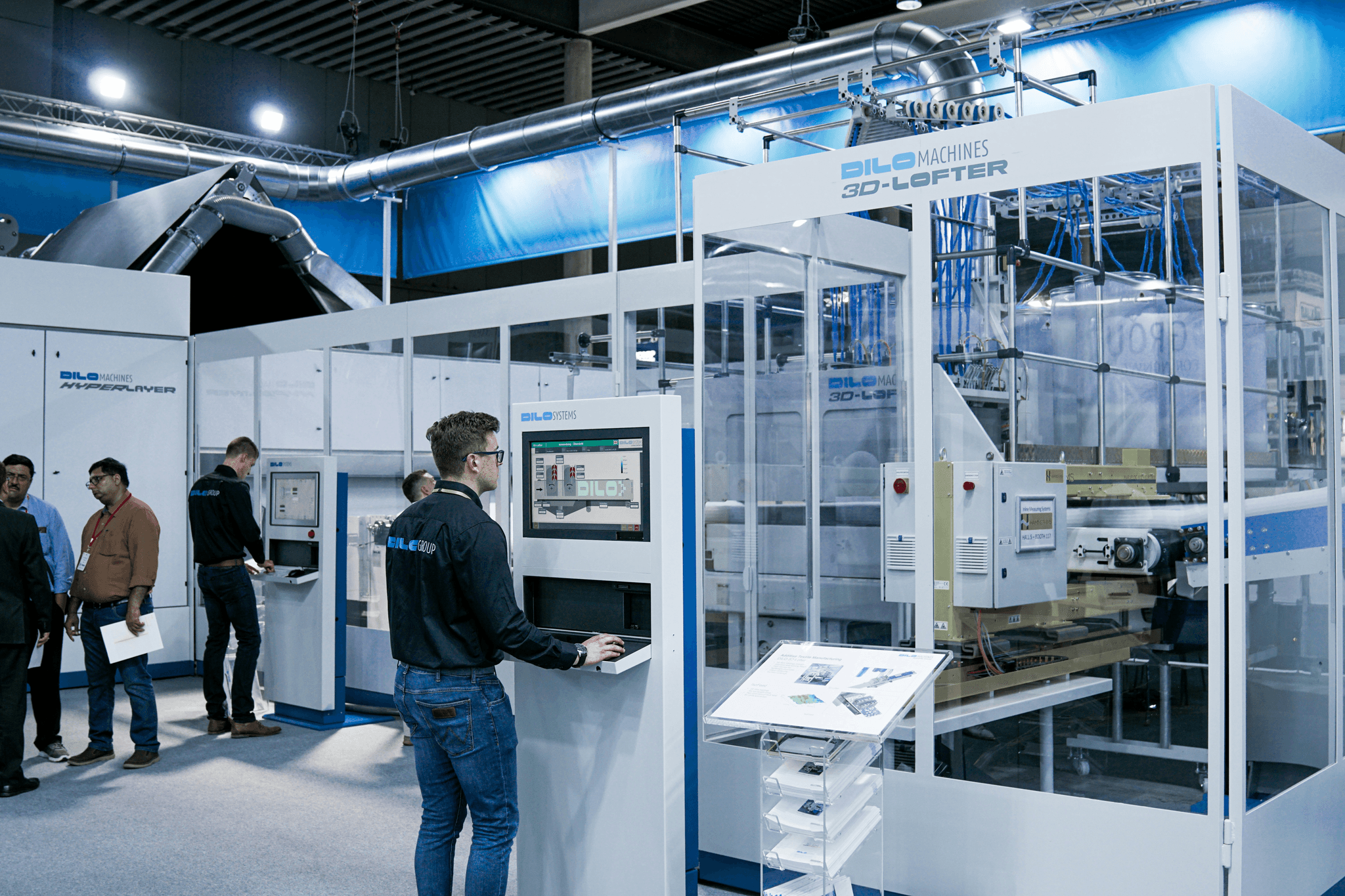Introduction
In the competitive landscape of modern business, understanding quality in business growth is paramount. Quality isn't just an afterthought; it’s a critical component that can determine the success or failure of your expansion efforts. As companies strive to grow, they must grapple with how to maintain the quality of the product while scaling operations.
Understanding Quality in Business Growth
Quality serves as the backbone of any successful enterprise and directly impacts customer satisfaction and loyalty. Companies that prioritize quality tend to see higher retention rates, as customers are more likely to return for products they trust. So, how do you ensure quality is maintained during periods of rapid growth? It requires a clear vision and a commitment to excellence at every level of production.
The Balancing Act of Expansion and Quality
Navigating the delicate balance between expansion and maintaining product quality can be tricky. Many businesses find themselves at a crossroads: should they push for aggressive growth or focus on refining their offerings? The key lies in adopting strategies that allow for both—ensuring that as you expand, your commitment to high standards remains unwavering.
Strategies for Quality Assurance
Implementing effective strategies for quality assurance is essential in today’s fast-paced market. This includes establishing clear benchmarks and communicating these standards across teams so everyone is aligned on what constitutes a quality product. Additionally, regular training sessions can empower employees with the knowledge needed to uphold these standards consistently—after all, what are the 5 characteristics of a quality product if not ingrained in company culture?
Why Quality Matters in Business Growth

In the competitive landscape of business, quality is not just a buzzword; it's the backbone of sustainable growth. Companies that prioritize quality are more likely to foster customer loyalty, enhance their brand reputation, and secure a strong market position. Understanding how to maintain the quality of the product can be the difference between thriving and merely surviving.
The Impact of Quality on Customer Loyalty
When customers experience high-quality products, they are more inclined to return for future purchases. This loyalty often translates into word-of-mouth marketing, which is invaluable in today’s digital age. So, how do you ensure quality is maintained? By consistently delivering products that meet or exceed customer expectations, businesses can create a loyal customer base that advocates for their brand.
Moreover, loyal customers are less price-sensitive and often willing to pay a premium for perceived value. Therefore, understanding what are the 5 characteristics of a quality product—such as durability, reliability, performance, aesthetics, and serviceability—becomes crucial in crafting offerings that resonate with consumers. In this way, maintaining high standards not only retains existing customers but also attracts new ones.
Building a Brand Reputation with Quality
A strong brand reputation is built over time through consistent delivery of quality products or services. Businesses known for their exceptional quality tend to stand out in crowded markets; they become synonymous with reliability and trustworthiness. When companies focus on how to maintain the quality of their product throughout every stage—from design to delivery—they lay the groundwork for an esteemed reputation.
Moreover, positive brand perception leads to increased market share as consumers gravitate toward brands they trust over others that may offer lower prices but lack consistency in quality. This reinforces why understanding what are the 4 types of quality control can help businesses implement effective strategies that uphold their brand's promise. After all, a stellar reputation doesn’t just happen; it requires diligence and commitment.
How Quality Influences Market Position
Quality plays an essential role in determining a company's position within its industry landscape. High-quality offerings can differentiate a business from competitors who may compromise on standards for cost savings or rapid production timelines. By focusing on how do you ensure quality is maintained at every level—from raw materials to final inspection—companies can achieve competitive advantages that enhance their market standing.
Additionally, brands recognized for superior quality often enjoy higher profit margins because consumers associate premium pricing with higher value propositions. This correlation between perceived value and actual product excellence underscores why businesses should invest time and resources into understanding what are the 5 characteristics of a quality product as they strategize for growth opportunities. Ultimately, maintaining high-quality standards not only secures current success but also paves the way for future advancements within evolving markets.
Setting Standards: How to Maintain Quality of Product

To successfully maintain the quality of a product, organizations must establish robust standards that serve as the foundation for all operations. These standards act like a roadmap, guiding teams through the complexities of production while ensuring that every item meets customer expectations. When considering how to maintain quality of product, it's essential to identify specific benchmarks that reflect both industry norms and company goals.
Establishing Clear Quality Benchmarks
Establishing clear quality benchmarks is crucial for any business aiming to uphold high standards in its products. These benchmarks should be measurable and achievable, providing a clear target for teams to aim for in their daily operations. By defining what constitutes excellence—whether through durability, performance, or design—companies can effectively answer the question: how do you ensure quality is maintained?
Moreover, these benchmarks should align with what are the 5 characteristics of a quality product: performance, features, reliability, conformance, and durability. By integrating these elements into their standards, businesses can create a comprehensive framework that not only promotes consistency but also enhances overall customer satisfaction.
Communicating Standards Across Teams
Once clear benchmarks are established, the next step is effective communication throughout all levels of an organization. It’s not enough for one department to understand how to maintain the quality of the product; every team member must be on board with these standards. Regular meetings and updates can help keep everyone informed about expectations and any changes made to existing protocols.
Utilizing collaborative tools can further enhance communication by ensuring that everyone has access to updated documents outlining quality standards and procedures. This transparency fosters an environment where employees feel empowered to ask questions or raise concerns about potential lapses in quality control—an essential aspect when considering what are the 4 types of quality control.
Training Employees to Uphold Quality
Training employees is paramount in maintaining high-quality products consistently across production lines. Comprehensive training programs should focus on instilling an understanding of established benchmarks while emphasizing best practices for meeting those criteria daily. When looking at how do you ensure quality is maintained?, investing in employee education becomes one of the most effective strategies.
Regular workshops and refresher courses can serve as excellent platforms for reinforcing these principles among staff members at all levels within an organization. Furthermore, encouraging team members to share their insights on maintaining product quality fosters a culture where continuous improvement thrives—a vital element in sustaining long-term success.
Quality Control Methods: What Are the 4 Types?

When it comes to maintaining the quality of a product, understanding and implementing effective quality control methods is essential. There are four primary types of quality control techniques that businesses often employ to ensure their products meet established standards. By mastering these methods, companies can confidently answer the question, How do you ensure quality is maintained? and ultimately drive growth without sacrificing excellence.
Statistical Process Control for Consistency
Statistical Process Control (SPC) is a powerful method used to monitor and control processes through statistical analysis. It helps identify variations in production that could affect the final product's quality, ensuring consistency across batches. By employing SPC, businesses can proactively address potential issues before they escalate, thus maintaining the quality of their products over time.
To implement SPC effectively, companies must gather data from their production processes and analyze it regularly. This ongoing assessment allows teams to spot trends or anomalies that might indicate a decline in quality. Ultimately, utilizing Statistical Process Control not only answers how to maintain the quality of the product but also reinforces customer trust through consistent delivery.
Control Charts: Visualizing Quality Trends
Control charts are a visual representation of process performance over time, making them an invaluable tool for monitoring quality trends. These charts help businesses quickly identify any deviations from established standards, allowing for timely interventions when necessary. With control charts in hand, organizations can easily track variations and maintain focus on how to maintain the quality of their products.
By plotting data points on a control chart, teams can see whether processes are stable or if corrective actions are needed. This visualization fosters better communication among team members about what constitutes acceptable performance levels while reinforcing accountability in maintaining product standards. In essence, control charts serve as both a diagnostic tool and a guide for ensuring consistent product quality.
Inspections to Identify Quality Gaps
Inspections play a crucial role in identifying gaps in product quality throughout various stages of production. Regular inspections allow businesses to catch defects early on rather than after they’ve reached customers—saving time and resources while preserving brand reputation. When considering how do you ensure quality is maintained?, implementing thorough inspection protocols becomes paramount.
Different inspection methods can be employed depending on the industry and specific requirements; these may include visual inspections, functional tests, or automated scanning technologies that detect flaws before products leave the facility. By establishing rigorous inspection processes aligned with defined benchmarks for what constitutes high-quality output—businesses can confidently address questions about what are the 5 characteristics of a quality product? Ultimately, inspections serve as both preventive measures against defects and corrective actions when issues arise.
Technology in Quality Management

In today's fast-paced business landscape, technology plays a pivotal role in how to maintain the quality of the product. Leveraging cutting-edge tools not only enhances efficiency but also ensures that quality is consistently upheld throughout the production process. By integrating advanced solutions, companies can address quality challenges proactively and effectively.
Leveraging AI for Quality Analysis
Artificial Intelligence (AI) has revolutionized how businesses approach quality management. By utilizing machine learning algorithms, companies can analyze vast amounts of data to identify patterns and anomalies that may indicate potential quality issues. This proactive approach answers the question: How do you ensure quality is maintained? With AI-driven insights, businesses can make informed decisions to enhance their products continuously.
Moreover, AI tools can provide real-time feedback on production processes, enabling teams to adjust operations promptly if they detect deviations from established standards. This immediate response capability is crucial for maintaining product integrity and ensures that any lapses in quality are addressed before they escalate into larger problems. As organizations seek to define what are the 5 characteristics of a quality product, AI serves as an invaluable resource for monitoring compliance with these essential traits.
Automation Tools for Consistent Quality
Automation tools are indispensable when it comes to achieving consistent product quality across various stages of production. These technologies streamline workflows and reduce human error—one of the leading causes of inconsistencies in product output. When considering how to maintain the quality of the product, automation helps establish standardized processes that employees can follow with minimal deviation.
For instance, automated inspection systems utilize sensors and cameras to evaluate products against predefined criteria continuously. This real-time assessment allows companies to catch defects early in the manufacturing process rather than relying solely on post-production inspections—a method that often leads to wasted resources and unsatisfied customers. Ultimately, by incorporating automation into their operations, businesses can confidently uphold their commitment to excellence while navigating what are the 4 types of quality control methods available today.
The Role of Software in Tracking Quality Metrics
Software solutions designed for tracking quality metrics have become essential tools for modern businesses aiming to maintain high standards in their products. These platforms enable organizations to collect data systematically on various aspects of production—ranging from raw material sourcing to final output inspection—and analyze it efficiently over time. The ability to visualize trends through dashboards empowers teams with insights needed for strategic decision-making regarding how do you ensure quality is maintained?
Additionally, such software often integrates seamlessly with other operational systems, allowing for a comprehensive view of performance across departments while facilitating communication about standards and expectations among team members. As companies strive for continuous improvement and consistency in their offerings, these software solutions become critical allies in defining what are the 5 characteristics of a quality product while ensuring adherence throughout all phases of production.
Partnering with Experts: The Role of China Inspection Pro

In the quest for excellence, businesses often find that partnering with experts can be a game-changer. One such expert is China Inspection Pro, which specializes in ensuring that companies know how to maintain the quality of their products through rigorous inspection processes. By leveraging third-party inspections, businesses can significantly enhance their quality assurance efforts.
Utilizing Third-Party Inspections for Quality Assurance
Third-party inspections are crucial in maintaining product quality and ensuring that standards are met consistently. How do you ensure quality is maintained? By engaging an independent entity like China Inspection Pro, companies can benefit from unbiased evaluations that identify potential issues before they escalate into larger problems. This proactive approach is essential for businesses aiming to uphold high-quality benchmarks while expanding their operations.
When it comes to understanding how to maintain the quality of the product, third-party inspectors provide insights that internal teams may overlook due to familiarity bias. They bring fresh perspectives and specialized knowledge about industry standards and best practices, making them invaluable partners in the pursuit of excellence. Ultimately, utilizing these inspections not only helps in identifying flaws but also reinforces a culture of continuous improvement.
How China Inspection Pro Supports Quality Maintenance
China Inspection Pro offers a suite of services designed specifically to support businesses in maintaining their product quality effectively. They provide detailed reports and actionable recommendations based on thorough inspections, allowing companies to make informed decisions about production processes and materials used. Their expertise ensures that organizations remain compliant with both local and international quality standards.
Moreover, when discussing how to maintain the quality of the product, it's essential to highlight how technology plays a role in these inspections. With advanced tools and methodologies at their disposal, China Inspection Pro employs techniques such as Statistical Process Control (SPC) and control charts—two fundamental types of quality control—to track trends over time efficiently. This data-driven approach not only enhances consistency but also aids in developing strategies for long-term success.
Ensuring Consistent Quality Through Expert Partnerships
The key takeaway from partnering with experts like China Inspection Pro is that consistent quality isn't just a goal; it's an ongoing process requiring dedication and collaboration. When asking what are the 5 characteristics of a quality product—durability, reliability, performance, features, and aesthetics—it's clear that each aspect must be monitored continuously through effective partnerships with specialists who understand these nuances deeply.
By investing in expert partnerships focused on how do you ensure quality is maintained?, businesses position themselves strategically within competitive markets while safeguarding their brand reputation. The four types of quality control methods—including inspections—are integral components this partnership addresses comprehensively through regular evaluations and feedback loops tailored for optimal results.
In conclusion, collaborating with seasoned professionals not only streamlines your operations but also fortifies your commitment to delivering exceptional products consistently without compromising on standards or customer satisfaction.
Conclusion
In the fast-paced world of business, maintaining quality is not just an afterthought; it’s a cornerstone of sustainable growth. As companies expand, the question of how to maintain quality of product becomes increasingly crucial. By implementing strategic steps and leveraging technology, businesses can ensure that quality remains at the forefront while pursuing growth.
Steps to Ensure Quality is Maintained
To effectively ensure quality is maintained, businesses should start by establishing clear quality benchmarks that align with industry standards and customer expectations. Regular training sessions for employees are essential, as they empower teams with the knowledge needed to uphold these standards consistently. Additionally, utilizing tools like statistical process control can help monitor processes and identify any deviations from established quality norms.
How do you ensure quality is maintained in your organization? It’s about fostering a culture where every team member understands their role in maintaining product integrity. This involves continuous feedback loops and open communication channels that allow for swift identification and resolution of any potential issues.
Characteristics of a Quality Product
What are the 5 characteristics of a quality product? First and foremost, durability ensures that products withstand wear and tear over time. Secondly, reliability guarantees consistent performance under various conditions; customers need to trust that what they buy will meet their expectations every time.
Furthermore, aesthetics play a significant role—how appealing a product looks can influence purchasing decisions immensely. Usability cannot be overlooked either; products must be easy to use so that customers have positive experiences right from the get-go. Lastly, value for money ties everything together; customers should feel they are getting their money's worth without compromise on any other characteristic.
Sustaining Growth Without Sacrificing Quality
Sustaining growth without sacrificing quality requires a delicate balancing act between expansion strategies and maintaining high standards across all operations. Companies must continuously evaluate how to maintain the quality of the product while scaling up production or entering new markets—this means investing in technology and processes that support both efficiency and excellence.
Moreover, understanding what are the 4 types of quality control can guide organizations in implementing effective measures tailored to their specific needs—ranging from inspections to statistical methods aimed at minimizing defects. Ultimately, it’s about creating an environment where growth does not come at the expense of customer satisfaction or brand reputation.
